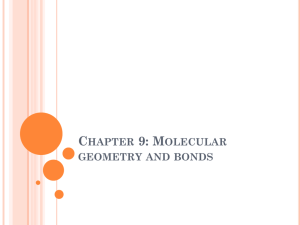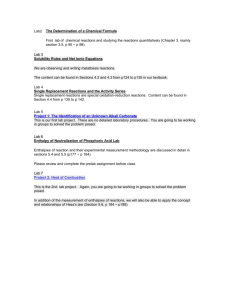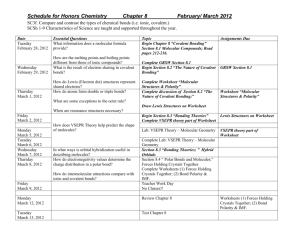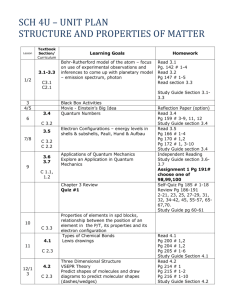Molecular Polarity
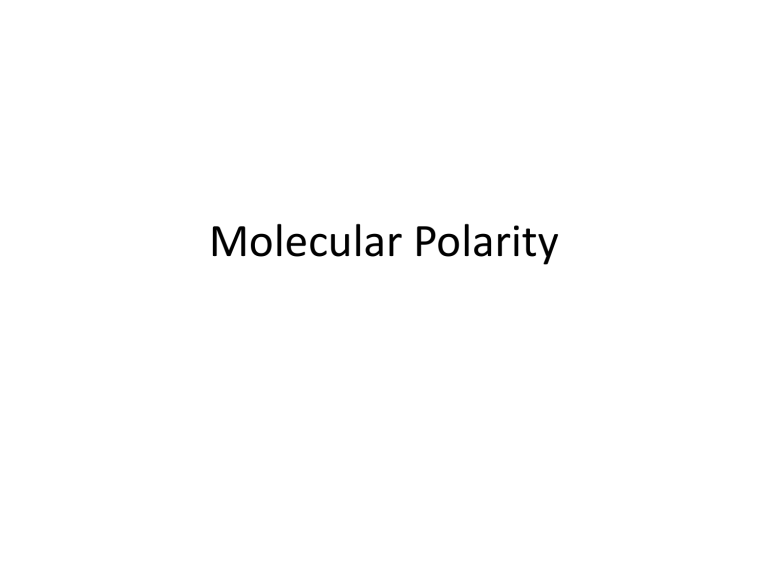
Molecular Polarity
Objective
Today I will be able to:
Predict the molecular shape of a molecule using the VSEPR theory
• Predict the polarity of molecules based on the molecular shape
Evaluation/ Assessment
Informal assessment – Listening to group interactions as they completethe molecular shapes lab and practice worksheets.
Formal Assessment – Analyzing student responses to the exit ticket and the practice worksheets.
Common Core Connection
Make sense of problem and persevere in solving them
Reason abstractly and quantitatively
Use appropriate tools strategically
Look for and make use of structure
Lesson Sequence
• Warm – Up
• Explain: Molecular Polarity
• Elaborate: Molecular Shapes Lab Polarity
– Formal and informal assessment
• Elaborate: Molecular Polarity Worksheet
• Elaborate: VSEPR Theory Practice
• Evaluate: Exit Ticket
• Formal assessment
Warm - Up
• What does VSEPR stand for?
• What is the VSEPR Theory?
• Why do the molecules form these specific shapes?
Objective
• Today I will be able to:
– Predict the molecular shape of a molecule using the VSEPR theory
– Predict the polarity of molecules based on the molecular shape
Homework
• Finish VSEPR Theory Practice
Agenda
• Warm-Up
• Molecular Polarity Notes
• Predicting Polarity in Molecular Shapes Lab
• Molecular Polarity Worksheet
• VSEPR Theory Practice
• Exit Ticket
Polarity
Molecular Polarity
• Just because a molecule has polar bonds does
not mean it is a polar molecule
• We have to look at the overall shape of the molecule
• Two or more polar bonds may cancel each other out leading to a nonpolar molecule
A molecule will be nonpolar if…
• All of the terminal atoms (or groups) are the same
• If all of the terminal atoms (or groups) are
symmetrically arranged around the central atom
• The terminal atoms (or groups) have the same charges
• Example: CO
2
A molecule will be polar if…
• One or more terminal atoms differ from each other
• The terminal atoms are not symmetrically arranged
• Polar molecules will have one slightly positive
end and one slightly negative end
• Example
– H
2
O
– NH
3
Polarity Examples
Molecular Shapes Lab
• Revisit the molecular shapes lab
• Fill out the column labeled polarity
• Please ask questions!
Molecular Polarity Worksheet
Complete in class and we will review selected answers as a group
VSEPR Theory Practice
Complete worksheet, whatever is not finished will be your homework
Exit Ticket
• Determine if the following molecules are polar or nonpolar
• (Hint: Draw a Lewis structure)
• Cl
2
• H
2
O
• CH
3
Br
• CH
4


